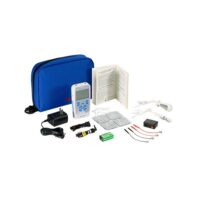Equestrian Injuries
Article by John Miller

Equestrian Injuries
Welcome to our comprehensive guide on equestrian injuries. As passionate physiotherapists dedicated to keeping you safe and healthy in your equestrian pursuits, we understand the importance of addressing common injuries associated with horse riding. In this guide, we’ll explore various types of injuries riders may encounter, along with preventive measures and treatment options.
Common Equestrian Injuries
Horse riding is an exhilarating activity, but it’s not without its risks. Falls are a primary cause of injuries among riders, often resulting in fractures, concussions, and sprains. Here are some common injuries to be aware of:
- Fractures: Falls from horses can lead to fractures in the arms, legs, or spine due to the impact with the ground.
- Concussions: Head injuries are a significant concern, especially when riders fall and hit their heads on hard surfaces.
- Sprains and Dislocations: Joints such as wrists, ankles, and shoulders are vulnerable to sprains and dislocations during falls.
Learn more about preventing and managing these injuries to stay safe in the saddle.
Preventive Measures
Taking proactive steps to reduce the risk of injuries is essential for every rider. Here are some preventive measures to consider:
- Proper Training: Investing in riding lessons and honing your skills can improve your ability to handle and control horses effectively.
- Safety Gear: Wearing appropriate safety gear, including helmets, body protectors, and sturdy footwear, can mitigate the impact of falls.
- Horse Selection: Choosing a well-trained and suitable horse for your skill level can help prevent accidents and injuries.
Explore our articles for detailed tips on injury prevention and safety measures.
Treatment Options
In the unfortunate event of an injury, prompt and appropriate treatment is crucial for recovery. Our physiotherapy services offer tailored treatment plans for equestrian injuries, including:
- Rehabilitation Exercises: Targeted exercises to strengthen muscles and improve flexibility can aid in the recovery process.
- Manual Therapy: Hands-on techniques such as massage and joint mobilization can alleviate pain and improve mobility.
- Injury Management: Our experienced physiotherapists provide comprehensive care to manage pain, reduce inflammation, and promote healing.
Discover more about our specialised treatments for equestrian injuries and get back in the saddle with confidence.
Conclusion
As passionate advocates for equestrian health and safety, we’re here to support riders in their journey towards injury prevention and recovery. By staying informed, implementing preventive measures, and seeking timely treatment, riders can enjoy their equestrian pursuits while minimising the risk of injuries. Stay tuned for more informative articles and resources to enhance your riding experience.
Equestrian Australia Insurance
Given the potential for injuries in horse riding, it’s advisable to check out EA Insurance, a provider specialising in equestrian coverage. By visiting the provided link, you can learn more about their insurance options and determine whether your current policy provides adequate coverage. EA Insurance may provide a comprehensive range of benefits that can help alleviate the financial burden of horse riding-related accidents or injuries.
https://www.equestrian.org.au/Insurance
Related Articles
- Managing Concussions in Equestrian Sports: Understand the signs, symptoms, and treatment options for concussions in horse riding.















































































